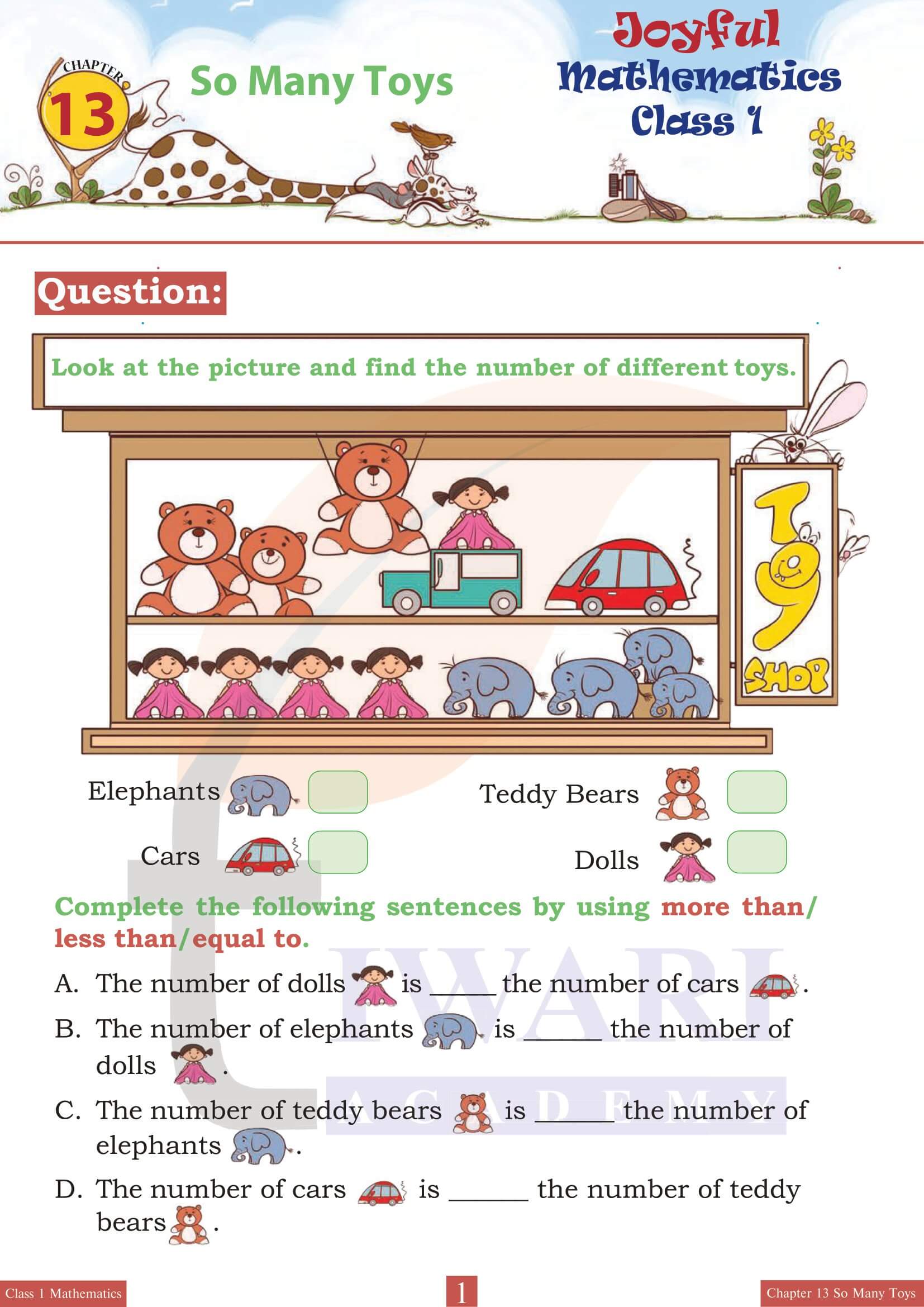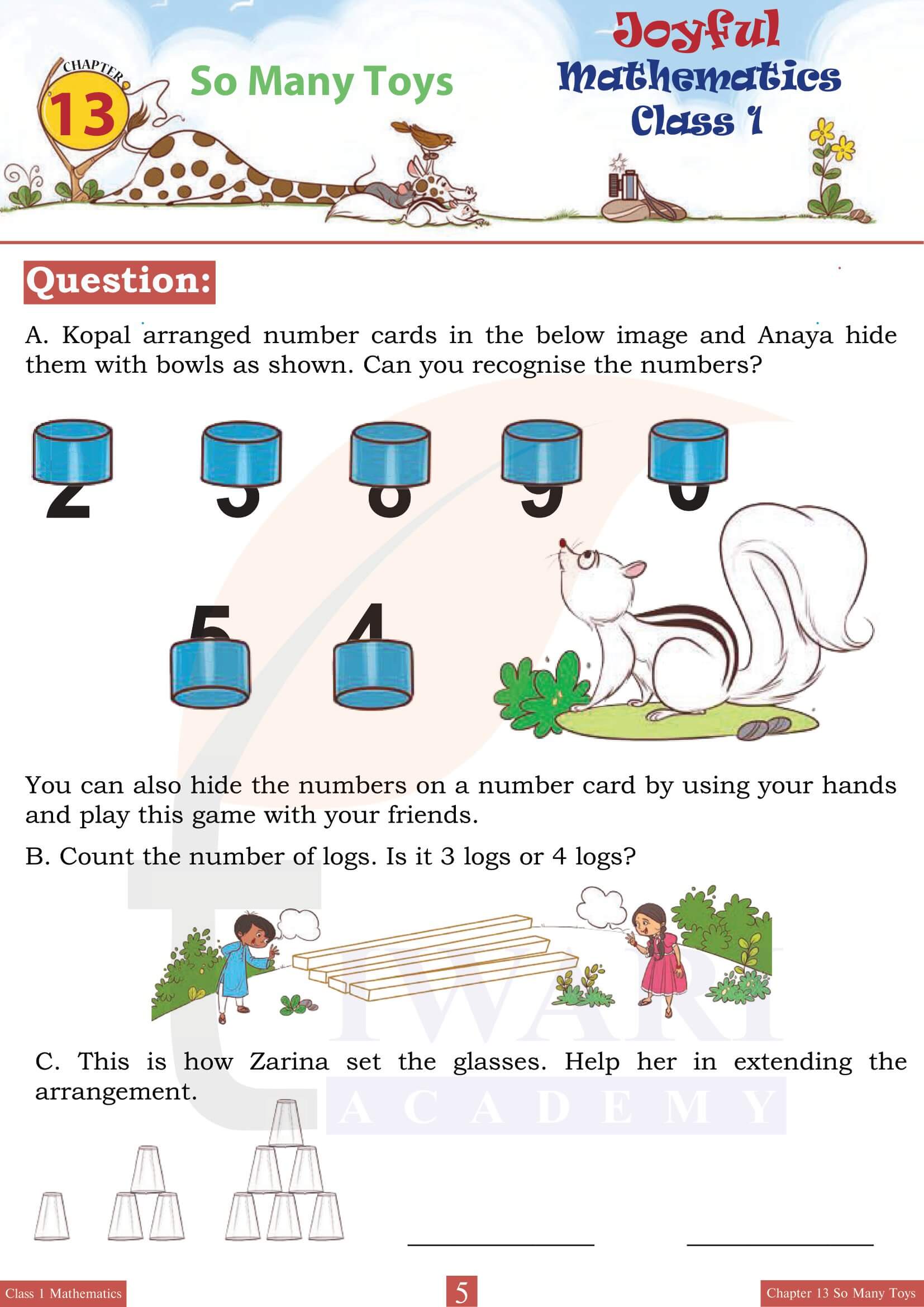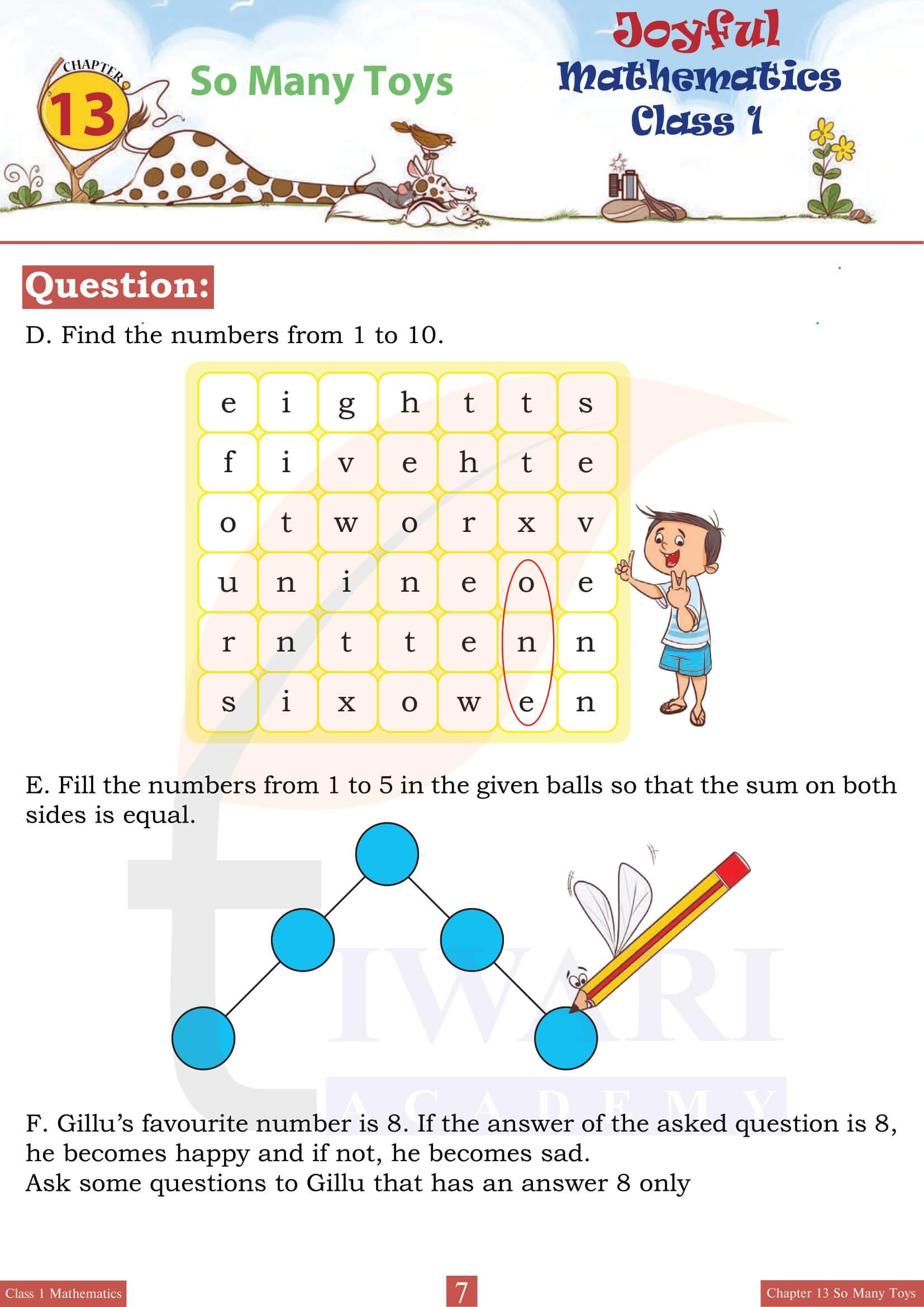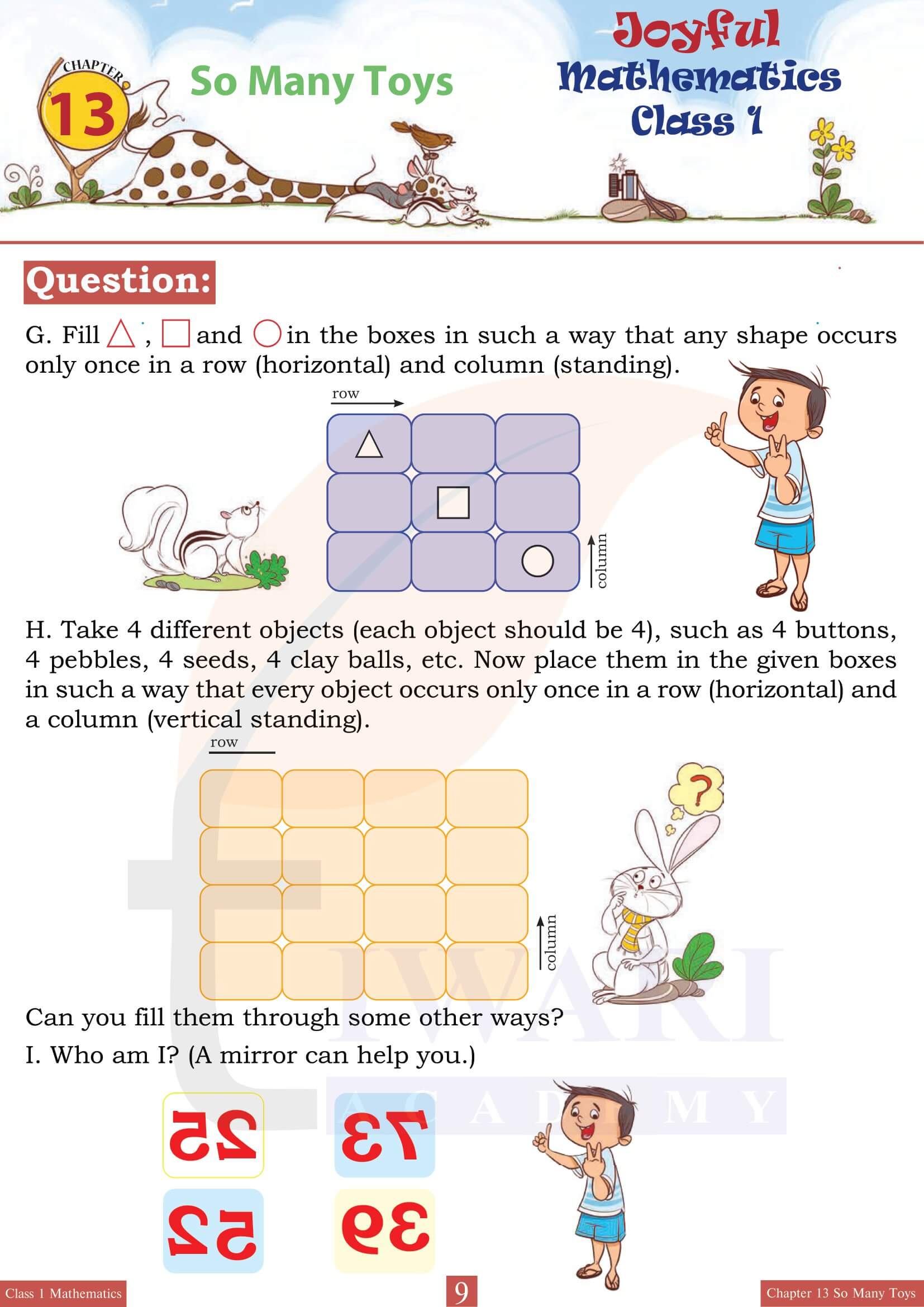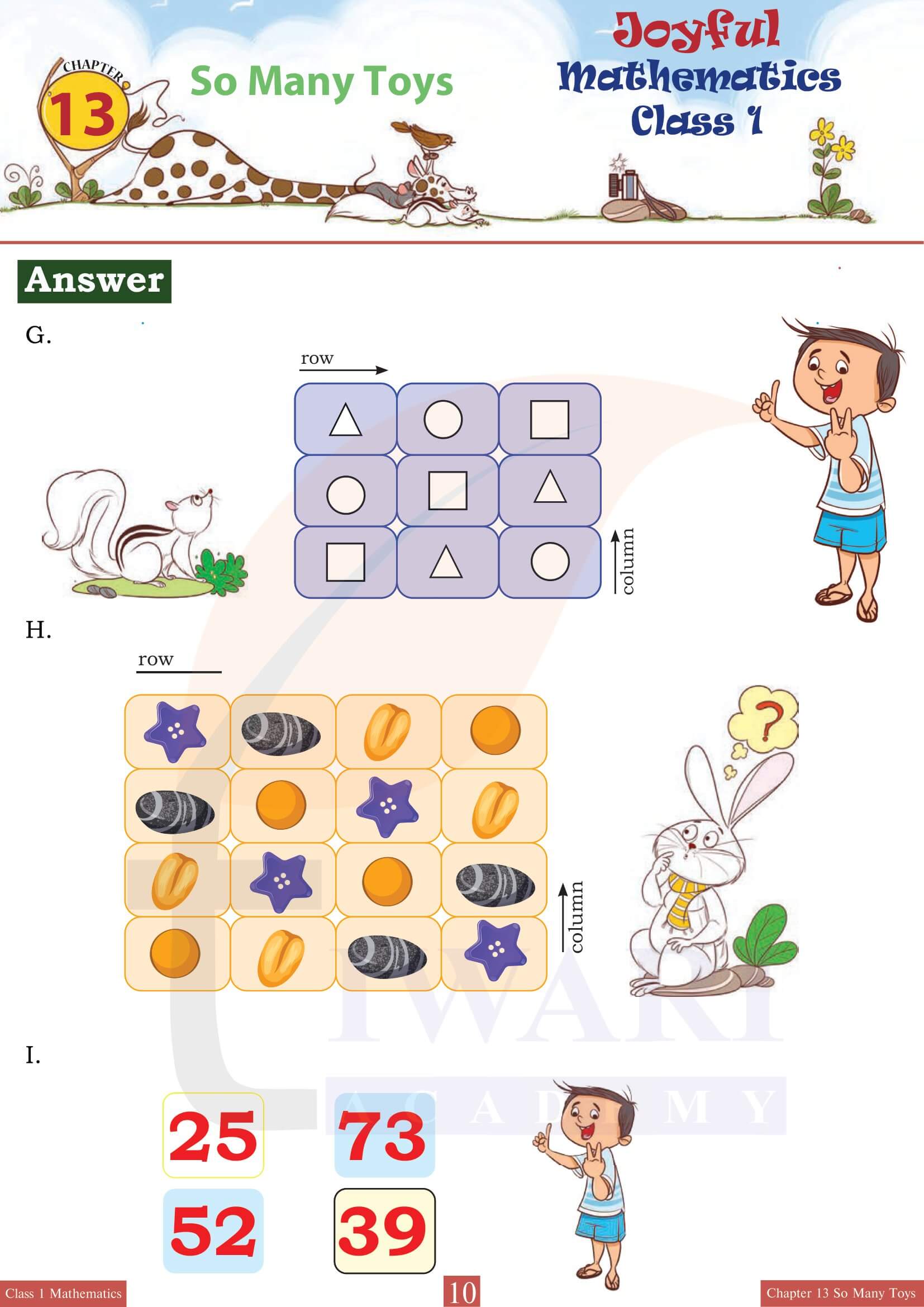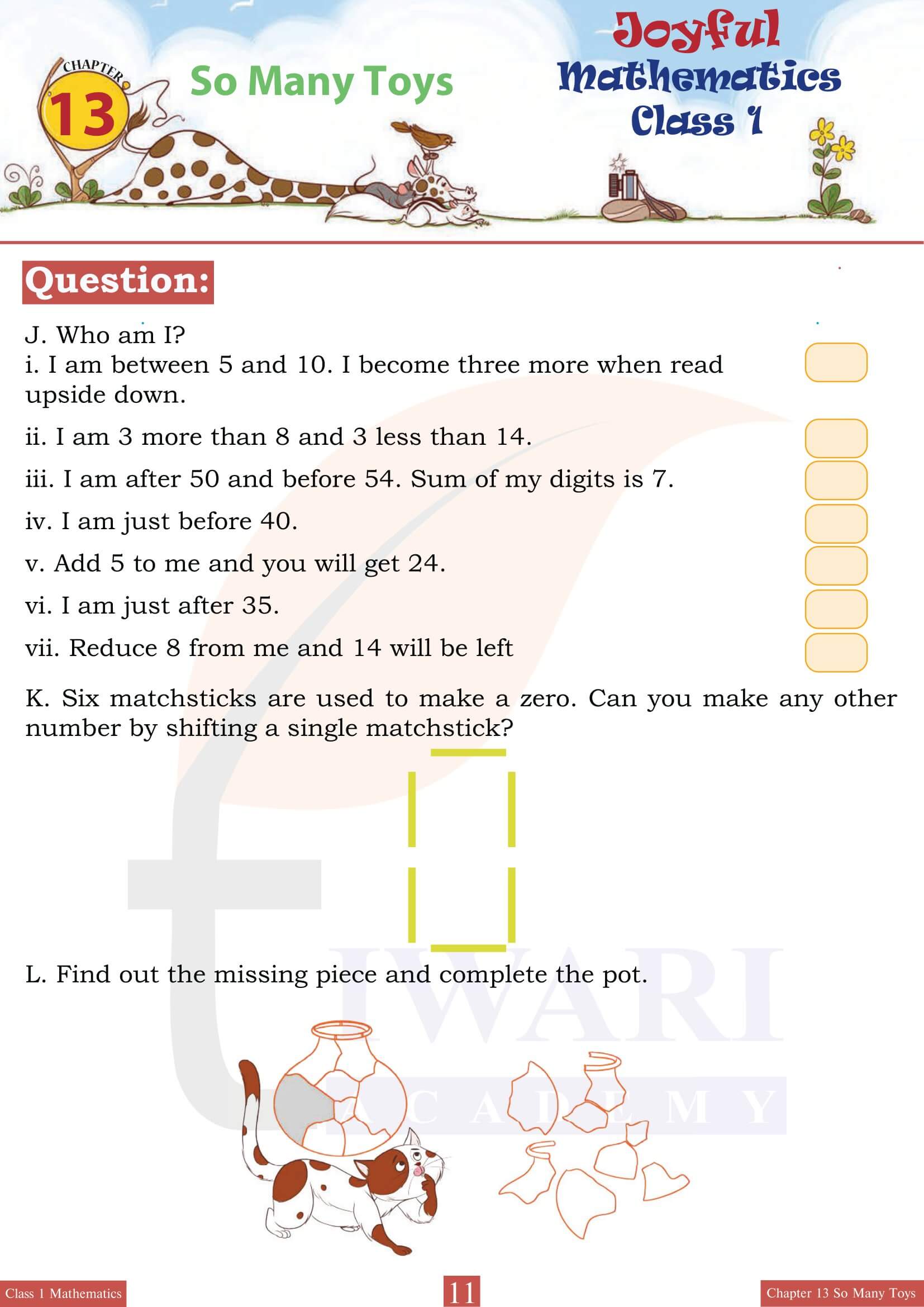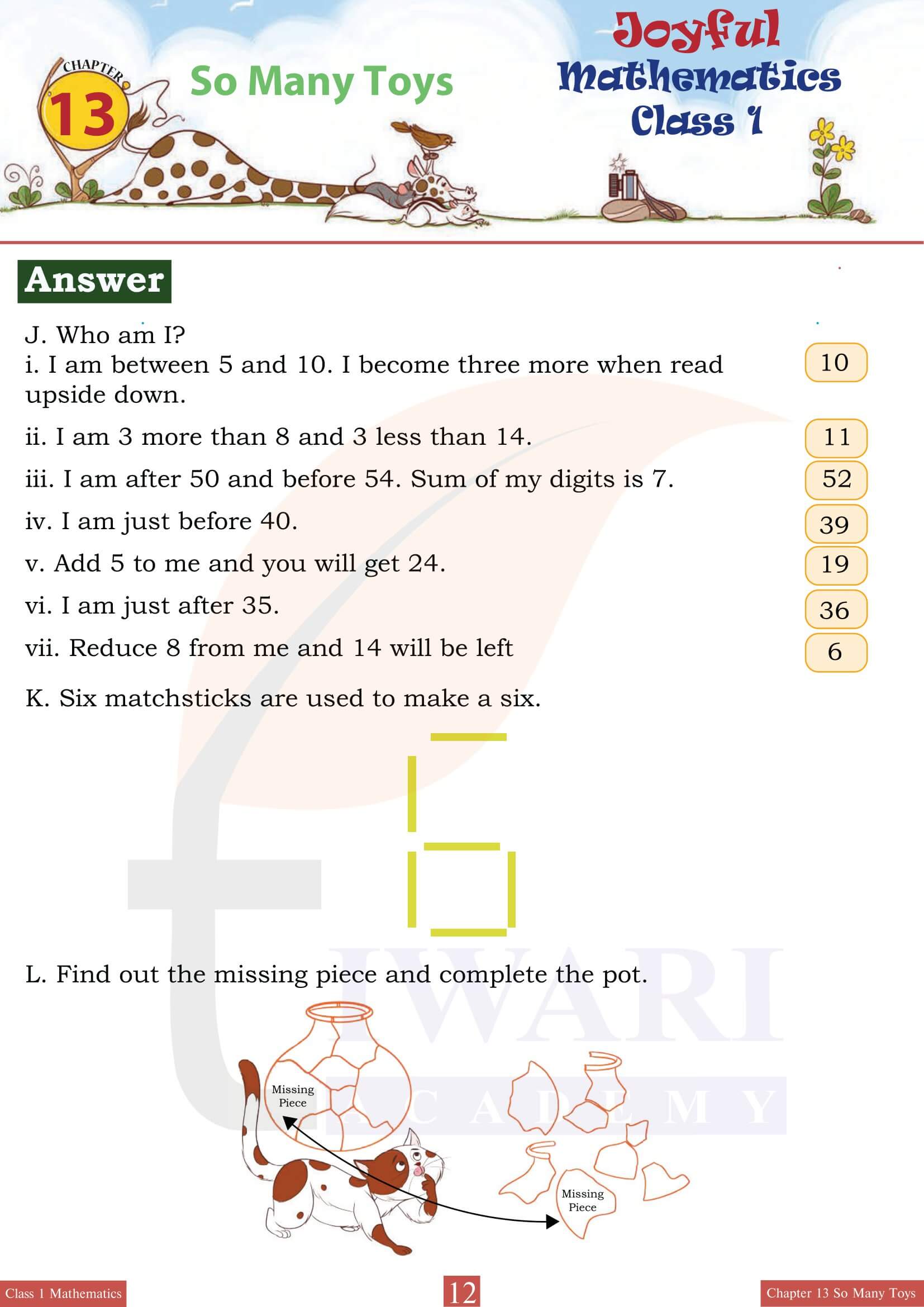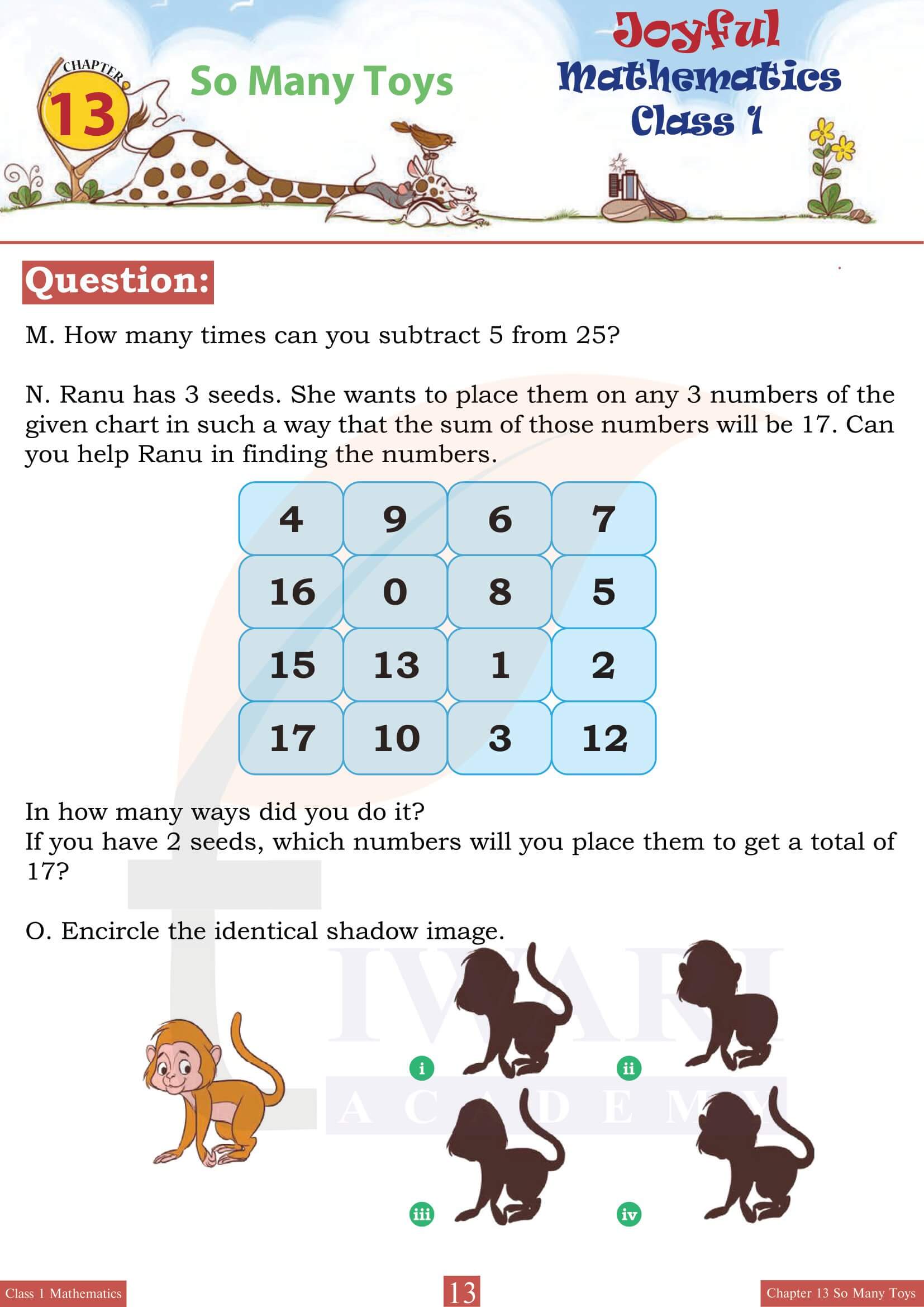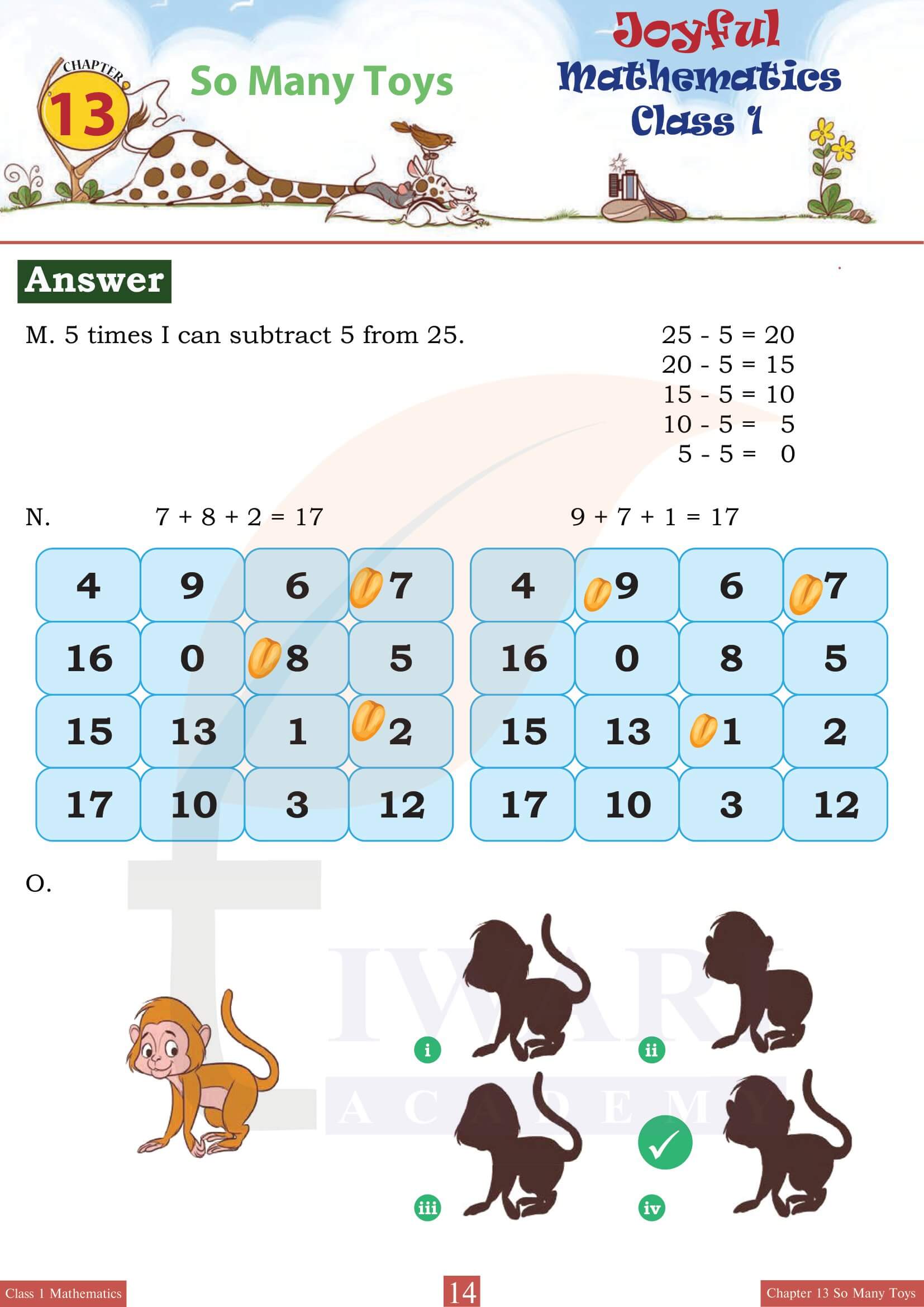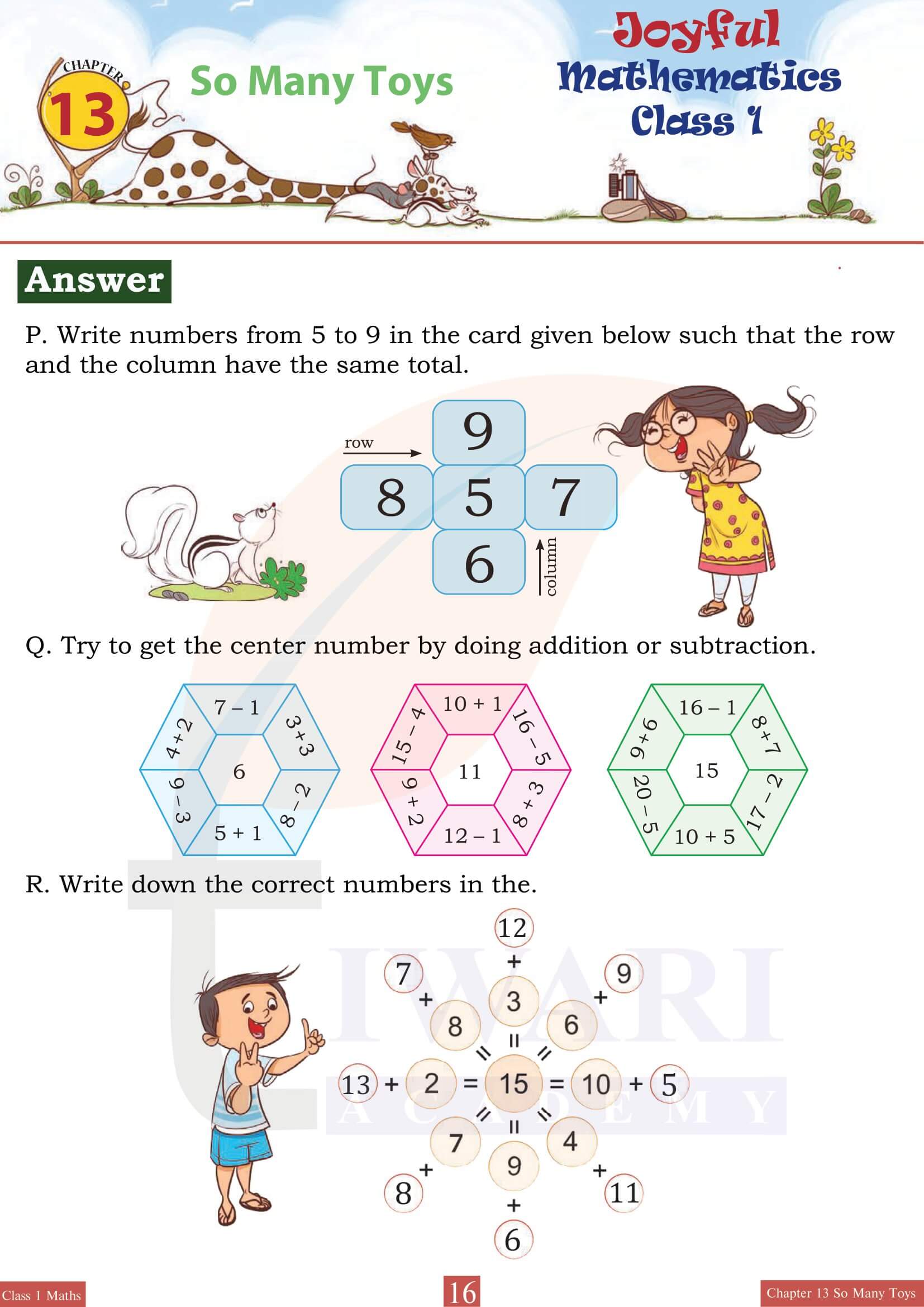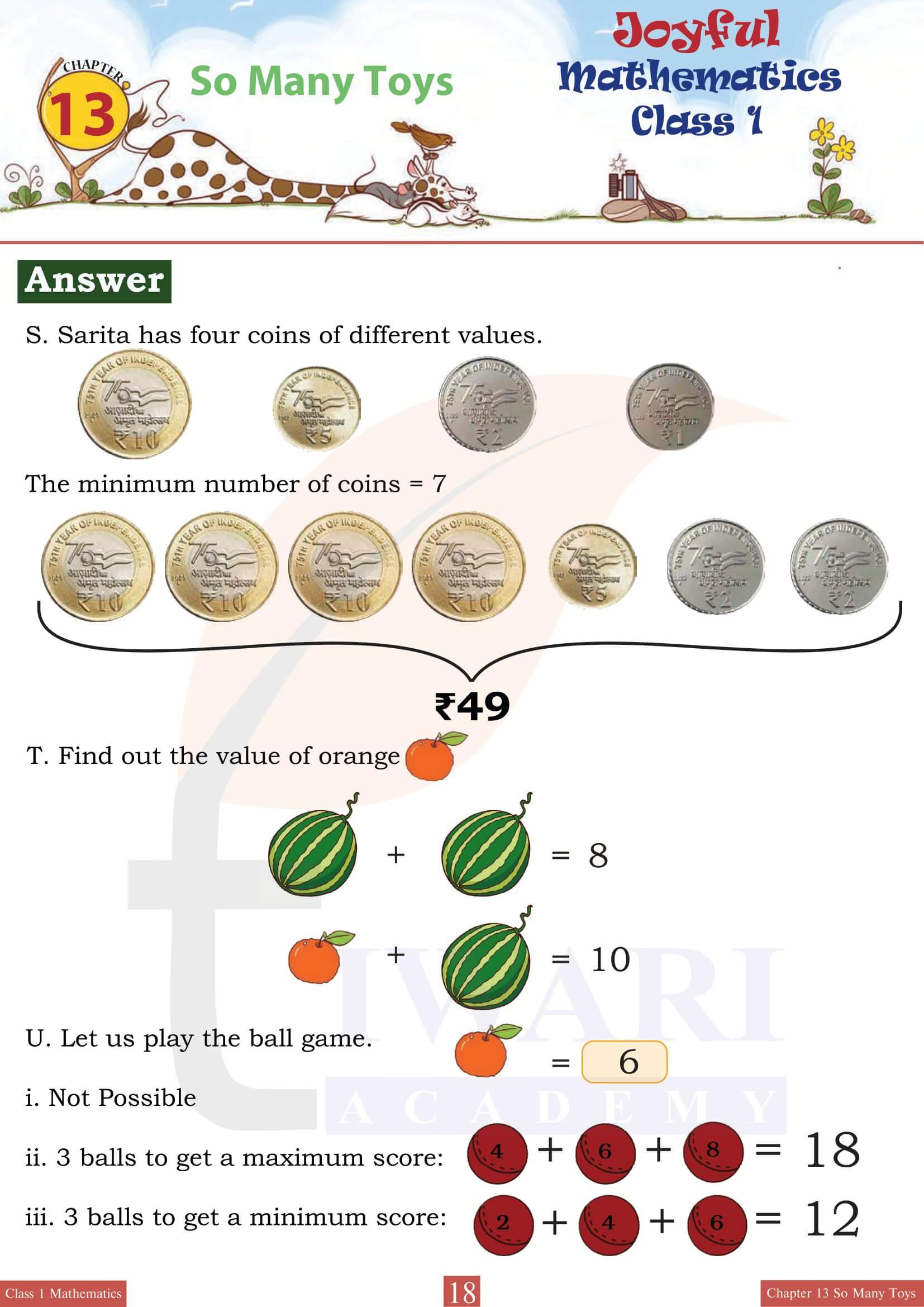NCERT Solutions for Class 1 Maths Joyful Chapter 13 So Many Toys (Data Handling) in Hindi and English Medium updated for academic session 2025-26. The question answer and explanation of class 1 Joyful Maths chapter 13 is given here in simple language.
Study Plan for Class 1 Math
Class 1 Maths Chapter 13 So Many Toys (Data Handling)
Chapter 13, “So Many Toys”, in the Class 1 Maths Textbook Joyful Mathematics, is designed to introduce young learners to the concept of counting and basic arithmetic operations using a context they are familiar with and find engaging: toys. This chapter cleverly integrates mathematical concepts into a playful theme, making learning both enjoyable and educational for first graders. It is an excellent example of how early math education can be made interactive and fun, encouraging children to explore numbers and their relationships through play.
Class 1 Maths Joyful Chapter 13 begins by setting a relatable scenario for the children, where they are asked to imagine a room filled with various toys. This scenario is not just a storytelling tool but serves as a foundation for the introduction of numbers and counting. By visualizing a familiar and exciting environment, students are more likely to engage with the material and understand the concepts being taught.
Class 1 Maths Joyful Chapter 13 Exercises for Practice
As the chapter 13 progresses, students are guided through a series of exercises designed to help them practice counting. These exercises might involve counting the number of dolls, cars, blocks, or any other toys mentioned in the text. The variety of toys used in the exercises serves a dual purpose: it keeps the children interested and caters to the diverse preferences of young learners, ensuring that every child finds something they like within the exercises.
In addition to counting, “So Many Toys” introduces basic arithmetic operations such as addition and subtraction, using the toys as manipulatives. For example, students might be asked to imagine adding two more cars to a set of three cars and then counting the total, or removing a doll from a set of five dolls and counting how many are left. These activities are crafted to help children visualize mathematical concepts, making abstract ideas more concrete and understandable.
Importance of Comparison and Sorting
Class 1 Maths Joyful Chapter 13 also emphasizes the importance of comparison and sorting, which are fundamental mathematical skills. Children might be asked to compare the number of two different types of toys or to sort toys based on certain criteria, such as size or color. These activities not only reinforce counting skills but also introduce the concepts of more than, less than and equal to, which are crucial for understanding mathematical relationships.
Throughout Class 1 Maths Joyful Chapter 13, interactive elements such as colorful illustrations, puzzles, and games are incorporated to enhance the learning experience. These elements are not mere decorations but are integral to the teaching strategy, as they help to maintain students’ interest and motivation. By engaging with these interactive components, children develop a hands-on understanding of math, which can be more effective than passive learning methods.
Group Activities and Discussions
“So Many Toys” encourages group activities and discussions, fostering a collaborative learning environment. Children are encouraged to work together to count toys, solve problems and share their findings. This collaborative approach not only helps in reinforcing mathematical concepts but also develops social skills, such as communication and teamwork.
Chapter 13 “So Many Toys” of the Class 1 Maths Textbook “Joyful” is a carefully crafted lesson that introduces young learners to the world of mathematics through a context they find familiar and enjoyable. By integrating counting, basic arithmetic operations, comparison and sorting into a playful theme, the chapter ensures that learning is both effective and fun.
The use of interactive elements, group activities, and a variety of exercises caters to the diverse learning styles of first graders, making this chapter an exemplary model for teaching early math skills.
